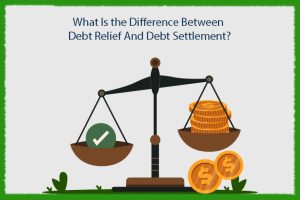The Difference Between Debt Relief and Debt Settlement
 Debt is a frequently used term in the lending business. It means a sum of money that is owed to the lender by the borrower. However, in the lending practice, there are more concepts that are associated with debt than just the term itself. Out of those, debt relief and debt settlement are two of the important concepts that every borrower must know about. Let’s go through in brief, and see how they are different.
Debt is a frequently used term in the lending business. It means a sum of money that is owed to the lender by the borrower. However, in the lending practice, there are more concepts that are associated with debt than just the term itself. Out of those, debt relief and debt settlement are two of the important concepts that every borrower must know about. Let’s go through in brief, and see how they are different.
Debt Relief:
Debt relief is also called debt cancelation. Debt relief can mean partial as well as full. Based on the financial situation, the borrower can apply for debt relief to the creditor (financing company). That is basically a negotiation between the two parties. There are two ways a debtor can go for debt relief. The first option is by getting identified as bankrupt, and the second is debt consolidation where all the loans are consolidated into one and the borrower makes payment to one loan than multiple ones.
Debt Settlement:
On the other hand, debt settlement or debt negotiation means paying a portion of the amount owed and getting debt free by the lender. This would be a lump sum payment, and no installment can be allowed. This agreement seems viable to the lender when the borrower is not financially fit to pay the total amount owed. Losing all than losing some is the idea behind debt settlement. This is also a very convenient option for the borrowers who want to see their credit score undamaged. One debt settlement can be done with the concerned lender, and cannot be clubbed like the debt consolidation.
If you are looking for a funding up to $1,000 to pay off your small outstanding debts, you can choose a better option of applying to CashAmericaToday even with a bad credit score by applying for a debt consolidation loan with us. This will be simpler than debt relief or debt settlement.